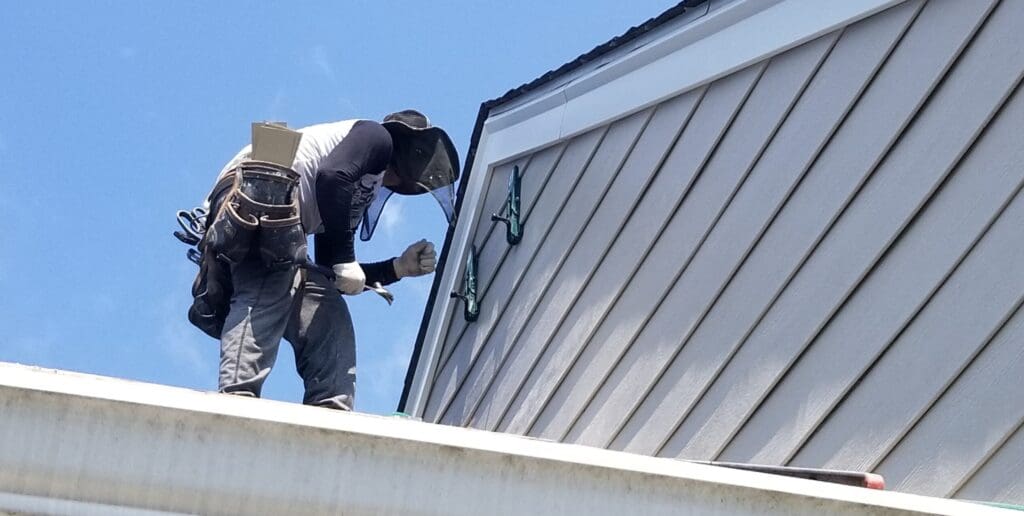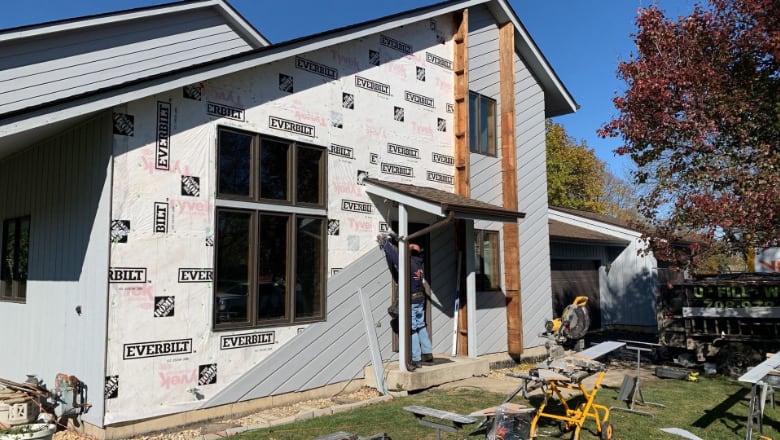The Important Overview to the Various Kinds Of Home Siding and Their One-of-a-kind Advantages
In the world of home improvement, picking the right exterior siding is an essential choice that affects both aesthetic appeal and functional performance. The selection of materials offered, such as wood, vinyl, fiber concrete, steel, and brick, each offer distinct advantages that cater to different requirements and choices. Understanding these differences can dramatically boost the longevity and worth of a building - morris siding contractor. Nevertheless, with many choices to consider, which home siding material absolutely stands apart for your details task? Checking out these choices can result in educated decisions that straighten with both style and usefulness.
Timber House Siding
Wood home siding, a popular choice for household outsides, uses a classic aesthetic that combines all-natural charm with architectural honesty. This house siding product is readily available in numerous designs, consisting of clapboard, roof shingles, and board-and-batten, enabling house owners to tailor their appearance to match their style choices. Wood siding is typically crafted from sturdy types such as cedar, redwood, or pine, which are recognized for their strength and ability to withstand ecological stress factors.
One of the key advantages of timber home siding is its exceptional insulation residential properties, which can add to energy efficiency and reduced home heating costs. Furthermore, wood exterior siding is eco-friendly, making it an eco-friendly option when sourced sustainably. Routine maintenance, consisting of painting or discoloration, can prolong its life-span and boost its look, allowing home owners to protect the natural appeal of the wood.
Nevertheless, possible downsides consist of vulnerability to bugs, rot, and climate damage, demanding appropriate treatment and maintenance - morris siding contractor. In spite of these problems, when properly taken care of, wood house siding can give a sturdy and beautiful option that boosts the character of a home while offering a cozy, inviting atmosphere

Plastic Siding
Vinyl siding has actually become a leading option for property owners seeking a low-maintenance exterior alternative that incorporates resilience and cost. This flexible material is crafted from polyvinyl chloride (PVC), making it resistant to various weather condition conditions, consisting of dampness and UV rays. Because of this, vinyl house siding does not warp, rot, or fade, making certain long-lasting visual appeal.
One of the primary advantages of vinyl home siding is its extensive variety of styles and colors, allowing homeowners to achieve the desired seek their home without the demand for constant repainting. In addition, vinyl house siding is very easy to set up, which can dramatically lower labor costs during construction or remodelling tasks.
Vinyl home siding also adds to power performance. Numerous options feature insulation support, which boosts thermal performance, helping to maintain comfortable interior temperatures and possibly lowering power expenses. Its smooth surface assists in simple cleansing, calling for just routine cleaning with a garden hose pipe to get rid of dust and debris.
Fiber Cement Exterior Siding
Fiber concrete exterior siding has gained traction among property owners and home builders alike because of its exceptional combination of resilience and visual flexibility. Composed of a blend of cellulose, sand, and cement fibers, this house siding option is go to my site crafted to withstand extreme climate condition, consisting of high winds, heavy rain, and temperature variations, making it a long-lasting selection for household exteriors.

One of the main benefits of fiber cement siding is its resistance to bugs, such as termites, and its non-combustible nature, offering improved fire safety and security. morris siding contractor. In addition, it is offered in a broad range of designs, structures, and shades, allowing property owners to accomplish their preferred aesthetic without giving up performance
An additional advantage is its low upkeep demands; fiber concrete home siding typically requires painting or discoloration every 5-10 years, which is much less regular than other products. Its longevity contributes to a lower total price of ownership, as it lowers the demand for frequent repairs or replacements.
Inevitably, fiber concrete house siding stands for an excellent financial investment for those seeking a durable, appealing, and functional exterior alternative, incorporating both form and function to improve the home's aesthetic appeal.
Metal Home Siding
The allure of metal home siding hinges on its durable longevity and modern visual charm, making it a preferred choice for modern style. Readily available in materials such as aluminum and steel, metal exterior siding provides a variety of finishes and shades, enabling homeowners to accomplish a customized appearance that complements their layout vision.

Power performance is another significant benefit, as several metal house siding products are created with insulation alternatives you can try here that aid manage interior temperatures. This can lead to lowered energy prices in time. Furthermore, metal exterior siding is frequently recyclable, making it an eco-friendly option for sustainability-minded home owners.
The installment procedure for steel siding can be reasonably straightforward, leading to a quicker turn-around time for building projects. Generally, metal exterior siding integrates functionality and design, making it a sensible alternative for those seeking a long-lasting and aesthetically enticing outside finish.
Brick and Stone Home Siding
Block and stone house siding attracts attention as a classic option that improves the visual charm of any home. Known for their longevity and reduced upkeep, these products give a phenomenal roi while elevating the residential property's curb appeal. Available in various colors, textures, and patterns, brick and stone can be customized to fit varied building styles, from conventional to modern.
One of the main advantages of block and rock siding is their power effectiveness. Both products possess natural shielding residential properties that help regulate indoor temperature levels, possibly reducing cooling and heating prices. Additionally, they offer remarkable fire resistance compared to other exterior siding alternatives, adding to boosted safety and security.
Another advantage is their longevity. Brick and rock can last for decades, frequently needing marginal maintenance past occasional cleaning. Unlike wood house siding, they are invulnerable to pests and rot, ensuring a long-lasting outside that stands up to the components.
Final Thought
In recap, the choice of siding dramatically influences a home's aesthetic appeal, power performance, and upkeep requirements. Each kind of exterior siding-- whether timber, vinyl, fiber steel, concrete, or block and rock-- uses distinct advantages tailored to various property owner choices view it and ecological problems. Comprehending these alternatives enables notified decisions that boost both the resilience and aesthetic appeal of household exteriors. Ultimately, selecting the best siding is vital for accomplishing an equilibrium in between capability and style in domestic style.
One of the main benefits of wood home siding is its superb insulation buildings, which can add to energy performance and lower home heating prices. Furthermore, timber house siding is biodegradable, making it an ecologically pleasant choice when sourced sustainably.One of the main benefits of metal exterior siding is its resistance to different ecological variables.Power effectiveness is another significant advantage, as many steel house siding products are created with insulation alternatives that assist manage indoor temperatures. Each kind of house siding-- whether timber, plastic, fiber block, metal, or cement and stone-- offers one-of-a-kind benefits tailored to different house owner preferences and environmental problems.